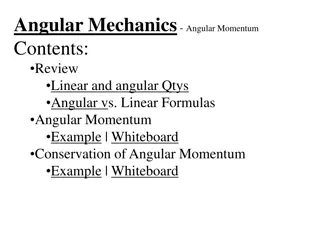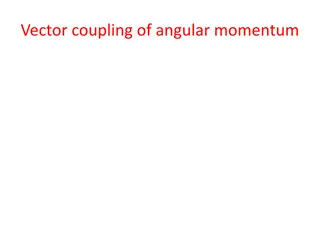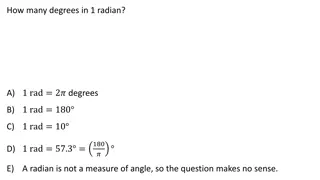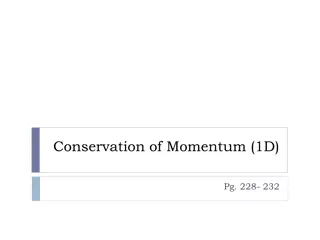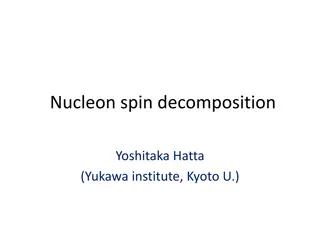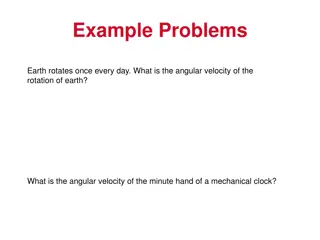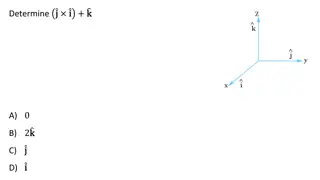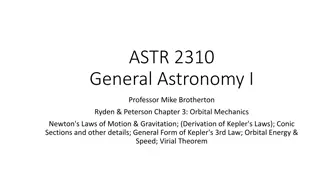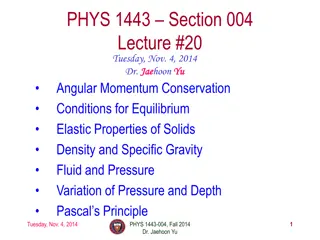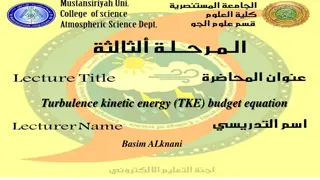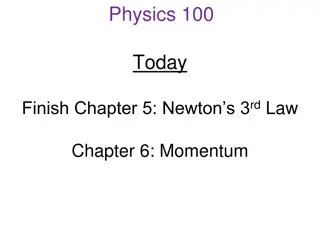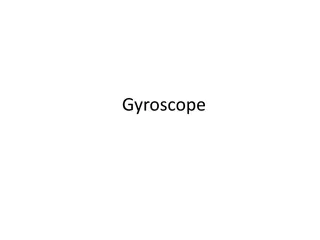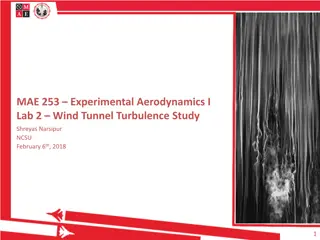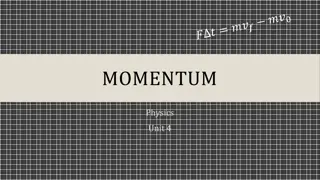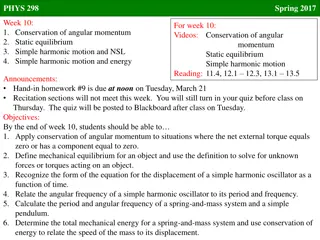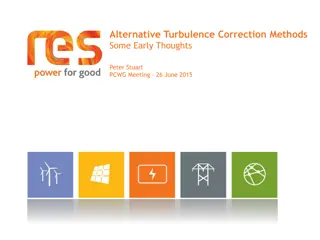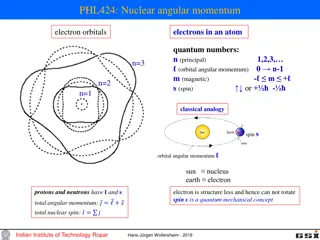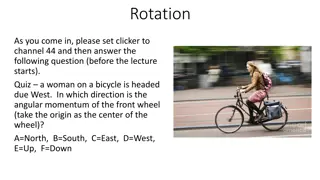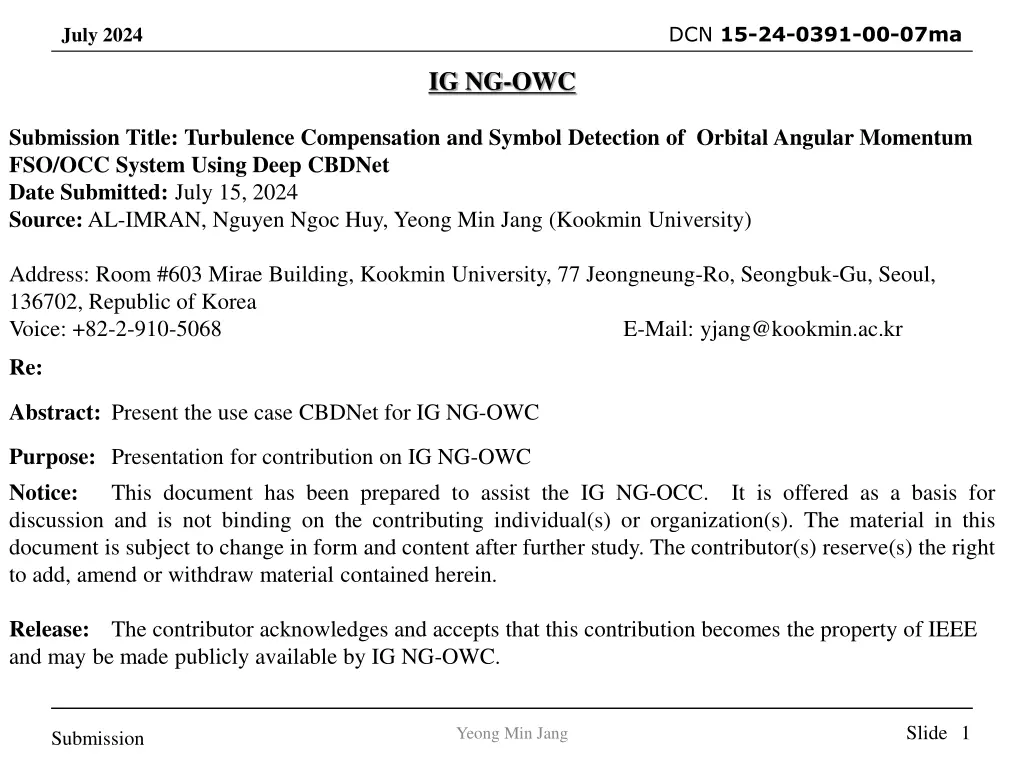
Turbulence Compensation & Symbol Detection in FSO/OCC System
Explore the use of CBDNet for mitigating turbulence effects and enhancing symbol detection in Free Space Optical/Optical Wireless Communication systems. Learn about the challenges, models, and machine learning-based channel estimation techniques revolutionizing FSO technology. Dive into the world of deep learning and advanced estimation methods for improved communication performance in varying atmospheric conditions.
Download Presentation

Please find below an Image/Link to download the presentation.
The content on the website is provided AS IS for your information and personal use only. It may not be sold, licensed, or shared on other websites without obtaining consent from the author. If you encounter any issues during the download, it is possible that the publisher has removed the file from their server.
You are allowed to download the files provided on this website for personal or commercial use, subject to the condition that they are used lawfully. All files are the property of their respective owners.
The content on the website is provided AS IS for your information and personal use only. It may not be sold, licensed, or shared on other websites without obtaining consent from the author.
E N D
Presentation Transcript
DCN 15-24-0391-00-07ma July 2024 IG NG-OWC Submission Title:Turbulence Compensation and Symbol Detection of Orbital Angular Momentum FSO/OCC System Using Deep CBDNet Date Submitted: July 15, 2024 Source: AL-IMRAN, Nguyen Ngoc Huy, Yeong Min Jang (Kookmin University) Address: Room #603 Mirae Building, Kookmin University, 77 Jeongneung-Ro, Seongbuk-Gu, Seoul, 136702, Republic of Korea Voice: +82-2-910-5068 E-Mail: yjang@kookmin.ac.kr Re: Abstract: Present the use case CBDNet for IG NG-OWC Purpose: Presentation for contribution on IG NG-OWC Notice: This document has been prepared to assist the IG NG-OCC. It is offered as a basis for discussion and is not binding on the contributing individual(s) or organization(s). The material in this document is subject to change in form and content after further study. The contributor(s) reserve(s) the right to add, amend or withdraw material contained herein. Release: The contributor acknowledges and accepts that this contribution becomes the property of IEEE and may be made publicly available by IG NG-OWC. Slide 1 Yeong Min Jang Submission
DCN 15-24-0391-00-07ma July 2024 Turbulence Compensation and Symbol Detection of Orbital Angular Momentum FSO/OCC System Using Deep CBDNet. July 16, 2024 Slide 2 Yeong Min Jang Submission
DCN 15-24-0391-00-07ma July 2024 Contents Introduction Free Space Optical Communication Channel Modeling Result and Discussion Slide 3 Yeong Min Jang Submission
DCN 15-24-0391-00-07ma July 2024 Introduction Free Space Optical (FSO) communication is an important field of optical wireless communication (OWC) technology that uses light to transmit data through free space, typically in the form of laser beams. It operates by sending modulated light signals through the atmosphere, with the receiver detecting and interpreting these signals. FSO offers high bandwidth and security, but its performance can be affected by weather conditions such as fog, rain, or snow. Channel modeling is a fundamental aspect of optical wireless communication (OWC) system design. It refers to the process of creating mathematical or statistical models to simulate the behavior and characteristics of a communication channel. Slide 4 Yeong Min Jang Submission
DCN 15-24-0391-00-07ma July 2024 Channel Estimation Machine Learning Based Channel Estimation Conventional Channel Estimation Deep learning based (3) Least Square Estimation (LS)(1) Conventional Neural Network based (4) Least Minimum Mean Squared Error (LMMSE)(2) Deep Residual Learning (5) FFDNet-based (6) Maximum Likelihood Estimation (ML) ResCBDNet References 1.Y. S. Hussein, M. Y. Alias, and A. A. Abdulkafi, On performance analysis of LS and MMSE for channel estimation in VLC systems, in Proc. IEEE 12th Int. Colloq. Signal Process. Appl. (CSPA), Melaka, Malaysia, 2016, pp. 204 209. 2.X. Shi, S.-H. Leung, and J. Min, Adaptive least squares channel estimation for visible light communications based on tap detection, Opt. Commun., vol. 467, Jul. 2020, Art. no. 125712 3. C.-J. Chun, J.-M. Kang, and I.-M. Kim, Deep learning-based channel estimation for massive MIMO systems, IEEE Commun. Lett., vol. 8, no. 4, pp. 1228 1231, Aug. 2019. 4. G. Fan, J. Sun, G. Gui, H. Gacanin, B. Adebisi, and T. Ohtsuki, Fully convolutional neural network-based CSI limited feedback for FDD massive MIMO systems, IEEE Trans. Cogn. Commun. Netw., vol. 8, no. 2, pp. 672 682, Jun. 2022 5. C. Liu, X. Liu, D. W. K. Ng, and J. Yuan, Deep residual learning for channel estimation in intelligent reflecting surface-assisted multiuser communications, IEEE Trans. Wireless Commun., vol. 21, no. 2, pp. 898 912, Feb. 2022. 6.Z. Gao, Y. Wang, X. Liu, F. Zhou, and K.-K. Wong, FFDNet-based channel estimation for massive MIMO visible light communication systems, IEEE Wireless Commun. Lett., vol. 9, no. 3, pp. 340 343, Mar. 2020. . Slide 5 Yeong Min Jang Submission
DCN 15-24-0391-00-07ma July 2024 Channel Modeling Difference between conventional and machine learning base channel estimation a. Using ML for channel estimation can offer advantages in scenarios where traditional methods may struggle to adapt to changing and complex channel conditions like (atmospheric turbulence or mobility of optical sources). DRL algorithms have the capability to learn and adapt to non-linear and non-stationary channel conditions, which may be difficult for traditional estimation techniques such as Least Squares Estimation, Maximum Likelihood Estimation (MLE) that assume linearity and stationarity. b. c. Traditional estimation methods may assume Gaussian noise(electronic and thermal noise). which may not accurately represent real-world noise characteristics in FSO/OCC systems. ML can learn to handle non-Gaussian noise distributions(Atmospheric turbulence). d. Traditional methods often rely on assumptions about the channel, noise, or environmental conditions. ML, being a model-free approach, can learn directly from data without making strong assumptions. Slide 6 Yeong Min Jang Submission
DCN 15-24-0391-00-07ma July 2024 Proposed Model Fig. 1. Diagram of the proposed coherently demodulated OAM-SK system (SLM: spatial light modulator, CCD: charge coupled device, CNN: convolutional neural network) Ref: Jiang, S., Chi, H., Yu, X., Zheng, S., Jin, X., and Zhang, X., Coherently demodulated orbital angular momentum shift keying system using a cnn-based image identifier as demodulator, Optics Communications 435, 367 373 (2019). Slide 7 Yeong Min Jang Submission
DCN 15-24-0391-00-07ma July 2024 Proposed Model In this study, we propose and demonstrate a coherently demodulated OAM- SK system using a CNN-based image identifier as demodulator. At the transmitter side, we use LG beams carrying different OAM eigenmodes as the symbols. At the receiver side, a Gaussian spherical wave from a local laser is mixed with the received LG beams and the interference patterns are captured by a CCD camera. We use a CNN based image identifier to directly recognize the received LG beams since each OAM eigenmode (with a topological charge ?) corresponds to a unique interference pattern, which features in high efficiency and simplicity of the receiver. We only need to train one CNN based image identifier for different m-ary OAM-SK system, different m-ary OAM-SK systems are configured with different image identifiers, which also simplifies the system s implementation. We investigate the system performance in terms of demodulation accuracy of the 4-, 8- and 16-ary OAM-SK systems with different intensity of local Gaussian beam, strength of AT and transmission distance. Slide 8 Yeong Min Jang Submission
DCN 15-24-0391-00-07ma July 2024 Model Description The proposed CNN model is depicted in Fig. 3. The inputs of the network are the intensity distributions of GPBs, including the patterns with and without the influence of turbulence. The standard GPB without turbulence is shared, and only one light intensity distribution needs to be generated. The trained CNN model requires a better generalization ability, that is, it can process untrained data well. Also, the CNN model with strong generalization ability can effectively prevent overfitting The size of each image is resized to 256 x 256 , and the images are normalized by the maximum gray value. The output of the network is the phase screen of AT with the size of 256 x 256 which is also normalized into [0,1] by a proper normalization factor. Slide 9 Yeong Min Jang Submission
DCN 15-24-0391-00-07ma July 2024 Results and Discussion Fig 3: Received modes (25dB) Fig 2: Received modes (5dB) Fig 1: Transmitted modes Slide10 Yeong Min Jang Submission
DCN 15-24-0391-00-07ma July 2024 Results and Discussion Fig 2: Received noisy and clean modes (20dB) Fig 1: Received noisy and clean modes (5dB) Slide 11 Yeong Min Jang Submission
DCN 15-24-0391-00-07ma July 2024 Conclusion In summary, we have investigated the OAM pattern recognition of FSO communication using an improved CNN model based on convolution blind denoising network. We prove that the recognition accuracy of OAM pattern can be improved further. Compared with previous studies, our method not only maintains high accuracy of OAM pattern recognition, but also reduces computational complexity. In additions, the results demonstrated that our system has better generalization ability and stronger robustness, which can maintain a relatively high accuracy in the case of unknown AT strengths. Slide12 Yeong Min Jang Submission
DCN 15-24-0391-00-07ma July 2024 Reference [1] G. Fan, J. Sun, G. Gui, H. Gacanin, B. Adebisi, and T. Ohtsuki, Fully convolutional neural network-based CSI limited feedback for FDD massive MIMO systems, IEEE Trans. Cogn. Commun. Netw., vol. 8, no. 2, pp. 672 682, Jun. 2022. [2] J. Fan, P. Liang, Z. Jiao, and X. Han, A compressive sensing and deep learning-based time-varying channel estimation for FDD massive MIMO systems, IEEE Trans. Veh. Technol., vol. 71, no. 8, pp. 8729 8738, Aug. 2022. [3] A. Yesilkaya, O. Karatalay, A. S. Ogrenci, and E. Panayirci, Channel estimation for visible light communications using neural networks, in Proc. Int Joint Conf. Neural Netw. (IJCNN), 2016, pp. 320 325. Slide13 Yeong Min Jang Submission


